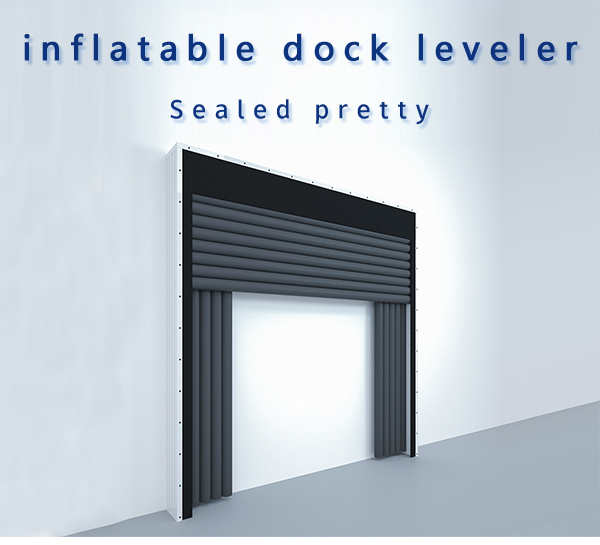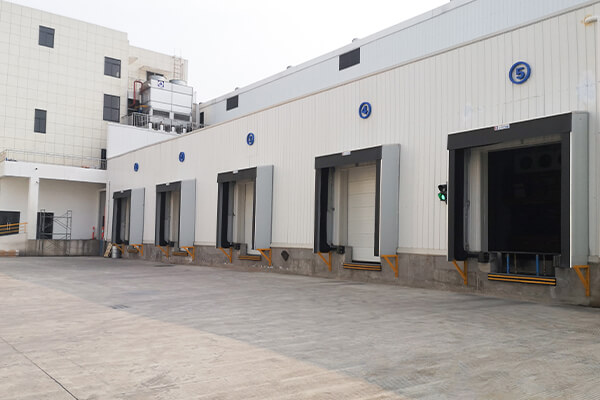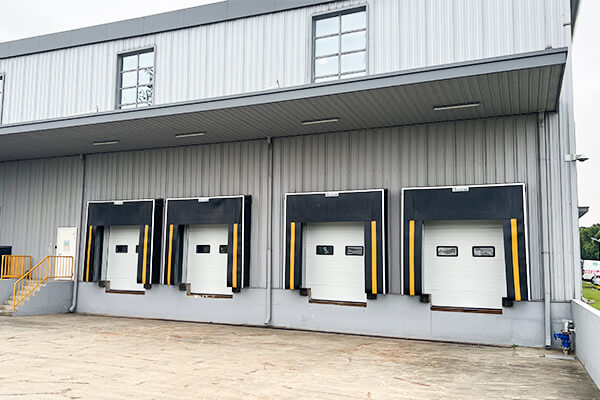
Dock seals play a crucial role in loading dock operations by creating a barrier between the warehouse and the outside environment. They help maintain the internal temperature, leading to lower heating and cooling costs. By preventing air exchange during loading and unloading, dock seals reduce energy consumption and operational costs. Additionally, they protect goods from weather elements, ensuring safety and quality. The use of dock seals supports sustainability initiatives by minimizing energy loss and enhancing overall efficiency.
Types of Dock Seals
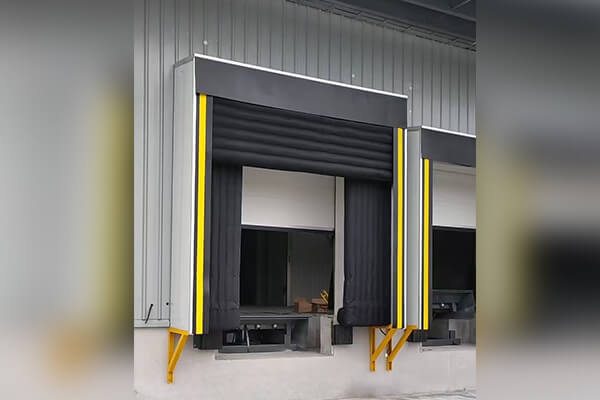
Dock seals come in various types, each designed to meet specific operational needs. Understanding these types helps you choose the right dock seal for your facility.
Foam Pad Dock Seals
Foam pad dock seals are among the most common types used in warehouses. They consist of foam pads covered with durable vinyl. When a truck backs into the dock, these pads compress to form a tight seal around the trailer. This type of dock seal is ideal for smaller door openings and facilities with limited truck size variations. Foam pad dock seals effectively maintain a controlled environment, making them suitable for temperature-sensitive operations. They also protect your warehouse from debris and harmful elements during loading and unloading.
Inflatable Dock Seals
Inflatable dock seals offer flexibility and adaptability. These seals use air pressure to create a seal around the trailer. You can adjust them to fit various trailer sizes, making them a versatile option for facilities with diverse loading needs. Inflatable dock seals provide excellent protection against weather elements and help maintain internal temperatures. They are particularly beneficial in environments where energy conservation is a priority. By minimizing air exchange, inflatable dock seals contribute to energy efficiency and cost savings.
Compression Dock Seals
Compression dock seals are designed to compress around the vehicle, creating a tight seal. This feature makes them ideal for operations where temperature control is crucial. Compression dock seals often include a fixed head pad that enhances the seal between the building and the truck trailer. They keep out cold, wind, dust, and fumes, ensuring a stable internal environment. These seals are an excellent choice for refrigerated facilities or warehouses dealing with temperature-sensitive products. By maintaining a consistent seal, compression dock seals help preserve product quality and safety.
Foam Curtain Dock Seals
Foam curtain dock seals provide an effective solution for maintaining a controlled environment in your warehouse. These seals consist of durable foam padding that forms an airtight barrier when a truck backs into the dock. This design prevents air and moisture from entering the loading dock area, which is crucial for facilities that handle temperature-sensitive goods. By using foam curtain dock seals, you can ensure that your products remain protected from external contaminants and weather elements. This type of dock seal is particularly beneficial in regions with extreme weather conditions, as it helps maintain internal temperatures and reduces energy consumption.
Beveled Pad Dock Seals
Beveled pad dock seals offer a unique advantage by accommodating different trailer heights. The beveled design reduces the front opening size, which improves sealing efficiency and ensures a snug fit around the trailer. This feature makes beveled pad dock seals ideal for facilities with varying truck sizes. By providing a consistent seal, these dock seals help maintain a stable internal environment, protecting your goods from dust, wind, and other harmful elements. Additionally, beveled pad dock seals enhance the safety of your loading dock operations by minimizing the risk of accidents caused by uneven surfaces or gaps.
General Benefits of Dock Seals
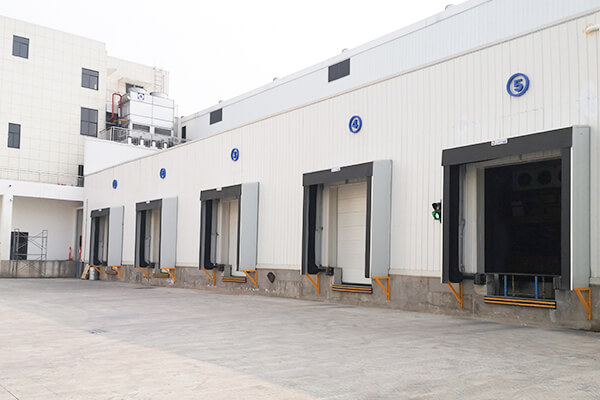
Dock seals offer numerous advantages that enhance the efficiency and safety of your loading dock operations. Understanding these benefits can help you make informed decisions about implementing dock seals in your facility.
Energy Efficiency
Dock seals significantly contribute to energy efficiency by minimizing air exchange between the warehouse and the outside environment. When a truck backs into the dock, the seal compresses to form a tight barrier. This action prevents the loss of conditioned air, reducing the need for additional heating or cooling. By maintaining a stable internal temperature, dock seals help lower energy consumption and operational costs. Facilities that prioritize energy conservation will find dock seals an invaluable asset in their sustainability efforts.
Protection from Elements
Dock seals provide robust protection against various weather elements. They create a barrier that shields your warehouse from rain, wind, dust, and other environmental factors. This protection is crucial for maintaining the quality and safety of your goods during loading and unloading. By preventing moisture and debris from entering the dock area, dock seals help preserve the integrity of your products. Facilities dealing with temperature-sensitive items will particularly benefit from this feature, as it ensures a controlled environment regardless of external conditions.
Enhanced Safety
Safety is a paramount concern in any loading dock operation. Dock seals enhance safety by reducing the risk of accidents and injuries. They eliminate gaps between the dock and the trailer, minimizing the chances of slips and falls. Additionally, dock seals prevent the intrusion of harmful elements like fumes and dust, which can pose health risks to workers. By providing a secure and stable loading environment, dock seals contribute to a safer workplace. Implementing dock seals can lead to fewer accidents and a more efficient loading process.
Maintenance Tips for Dock Seals
Proper maintenance of dock seals ensures their longevity and effectiveness. By following these tips, you can keep your dock seals in optimal condition.
Regular Inspections
Conduct regular inspections to identify any wear and tear on your dock seals. Look for signs of damage such as tears, holes, or compression loss. These issues can compromise the seal’s effectiveness, leading to energy loss and exposure to external elements. Regular checks allow you to address problems early, preventing costly repairs or replacements. By maintaining a routine inspection schedule, you ensure that your dock seals continue to provide a tight barrier against the outside environment.
Cleaning and Care
Keep your dock seals clean to maintain their performance. Dirt and debris can accumulate on the surface, affecting the seal’s ability to compress properly. Use a mild detergent and water to clean the seals, avoiding harsh chemicals that could damage the material. Regular cleaning not only enhances the appearance of your dock seals but also extends their lifespan. By taking care of your dock seals, you protect your warehouse from dust, dirt, and pests, ensuring a safe and efficient loading dock operation.
Timely Replacements
Replace dock seals promptly when they show significant signs of wear or damage. Over time, even the best-maintained seals will degrade and lose their effectiveness. Delaying replacement can lead to increased energy costs, safety hazards, and exposure to harmful elements. By replacing worn-out dock seals in a timely manner, you maintain a controlled environment and protect your products from outdoor contaminants. Investing in new dock seals ensures that your facility remains energy-efficient and secure, supporting your operational goals.
Choosing the right type of dock seal is crucial for maintaining an efficient and safe loading dock operation. Each type offers unique benefits tailored to specific needs, ensuring optimal performance. Regular maintenance plays a vital role in extending the lifespan and effectiveness of your dock seals. By conducting routine assessments, you can identify potential issues early and prevent costly repairs. Partnering with external service providers can enhance your maintenance strategy, offering specialized knowledge and quick fixes. This proactive approach not only reduces emergency repair needs but also supports a seamless and secure operational environment.
